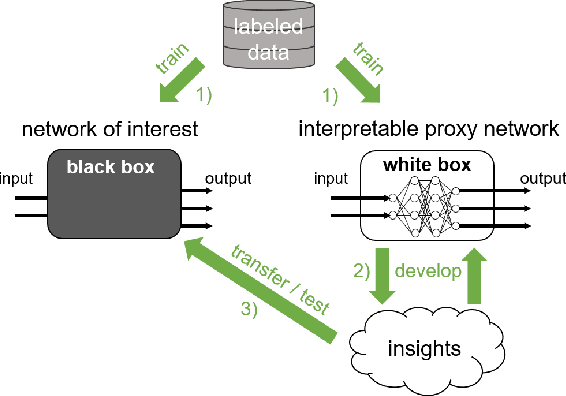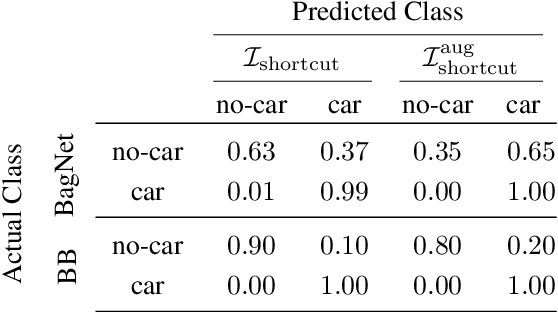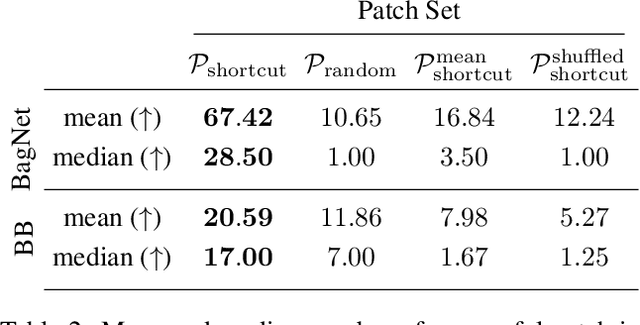Patch Shortcuts: Interpretable Proxy Models Efficiently Find Black-Box Vulnerabilities
Paper and Code
Apr 22, 2021



An important pillar for safe machine learning (ML) is the systematic mitigation of weaknesses in neural networks to afford their deployment in critical applications. An ubiquitous class of safety risks are learned shortcuts, i.e. spurious correlations a network exploits for its decisions that have no semantic connection to the actual task. Networks relying on such shortcuts bear the risk of not generalizing well to unseen inputs. Explainability methods help to uncover such network vulnerabilities. However, many of these techniques are not directly applicable if access to the network is constrained, in so-called black-box setups. These setups are prevalent when using third-party ML components. To address this constraint, we present an approach to detect learned shortcuts using an interpretable-by-design network as a proxy to the black-box model of interest. Leveraging the proxy's guarantees on introspection we automatically extract candidates for learned shortcuts. Their transferability to the black box is validated in a systematic fashion. Concretely, as proxy model we choose a BagNet, which bases its decisions purely on local image patches. We demonstrate on the autonomous driving dataset A2D2 that extracted patch shortcuts significantly influence the black box model. By efficiently identifying such patch-based vulnerabilities, we contribute to safer ML models.
 Add to Chrome
Add to Chrome Add to Firefox
Add to Firefox Add to Edge
Add to Edge